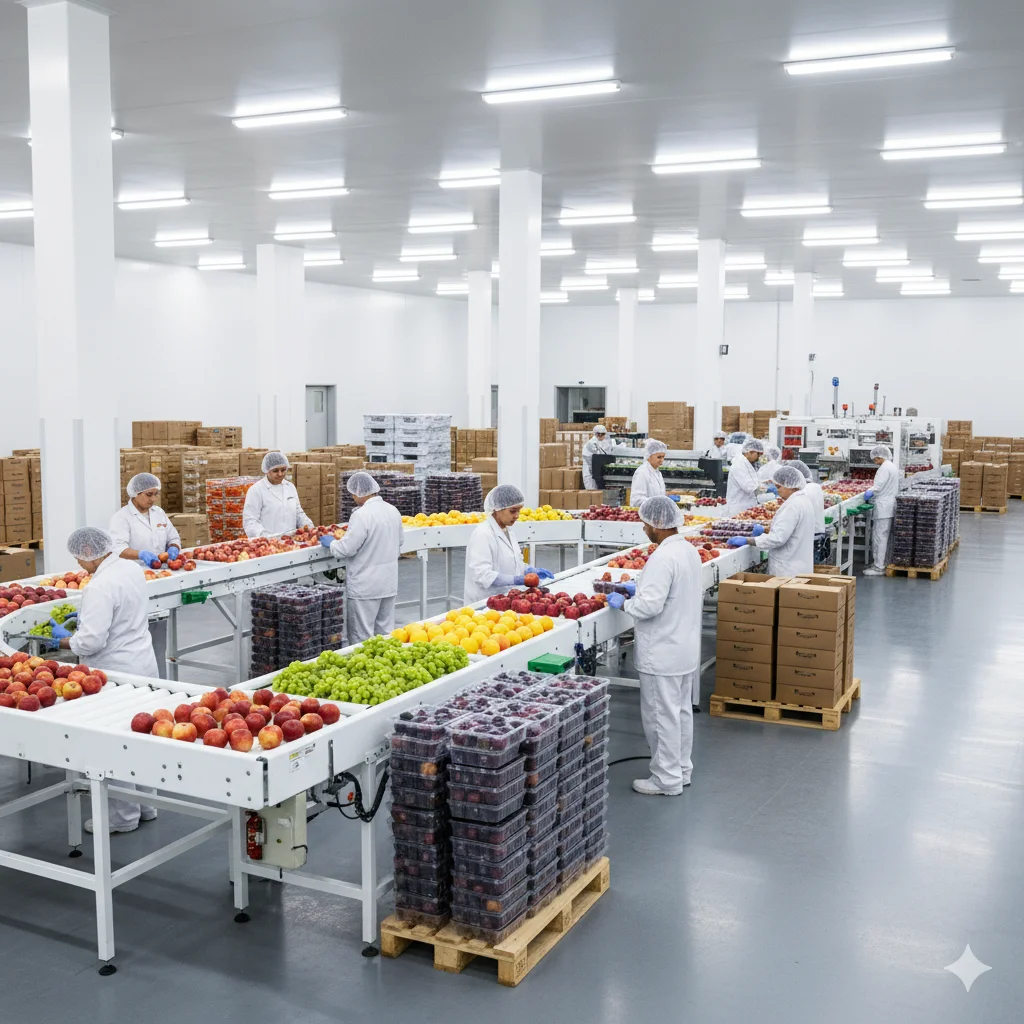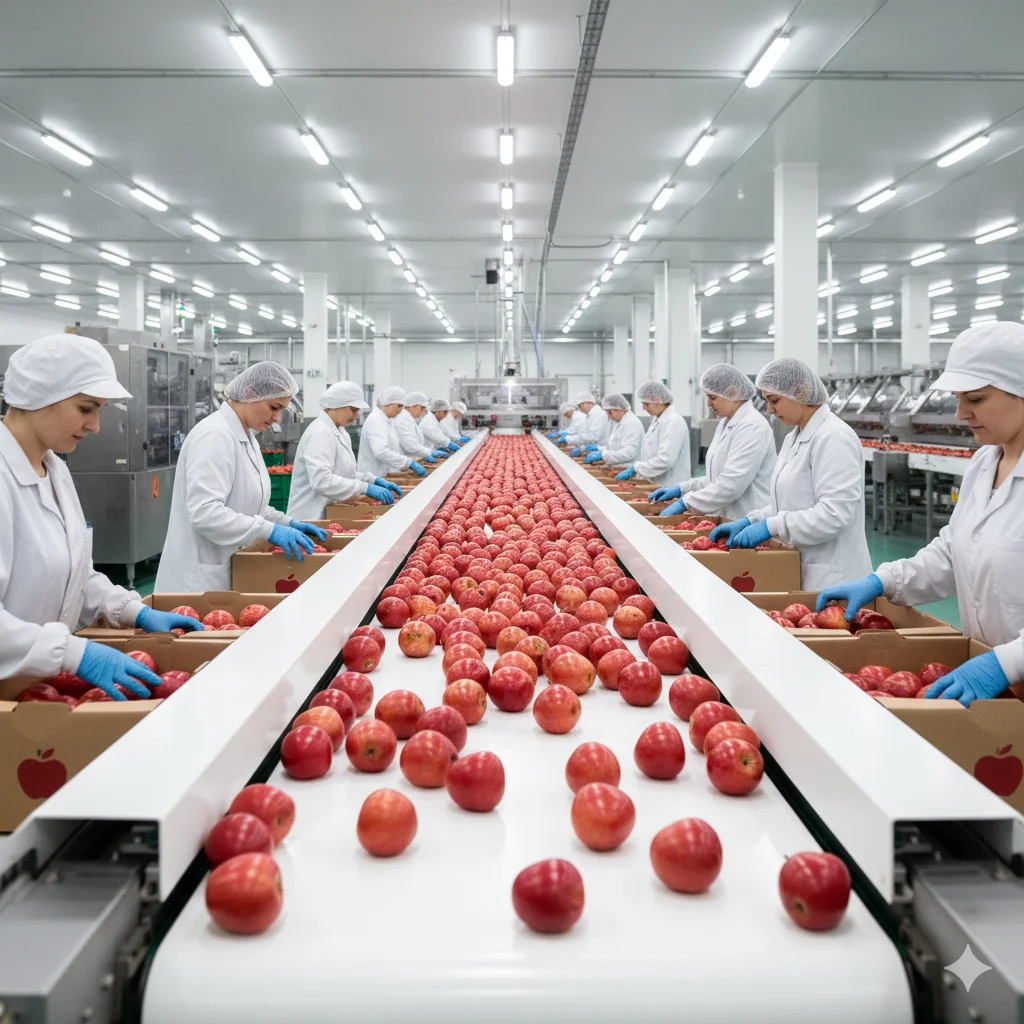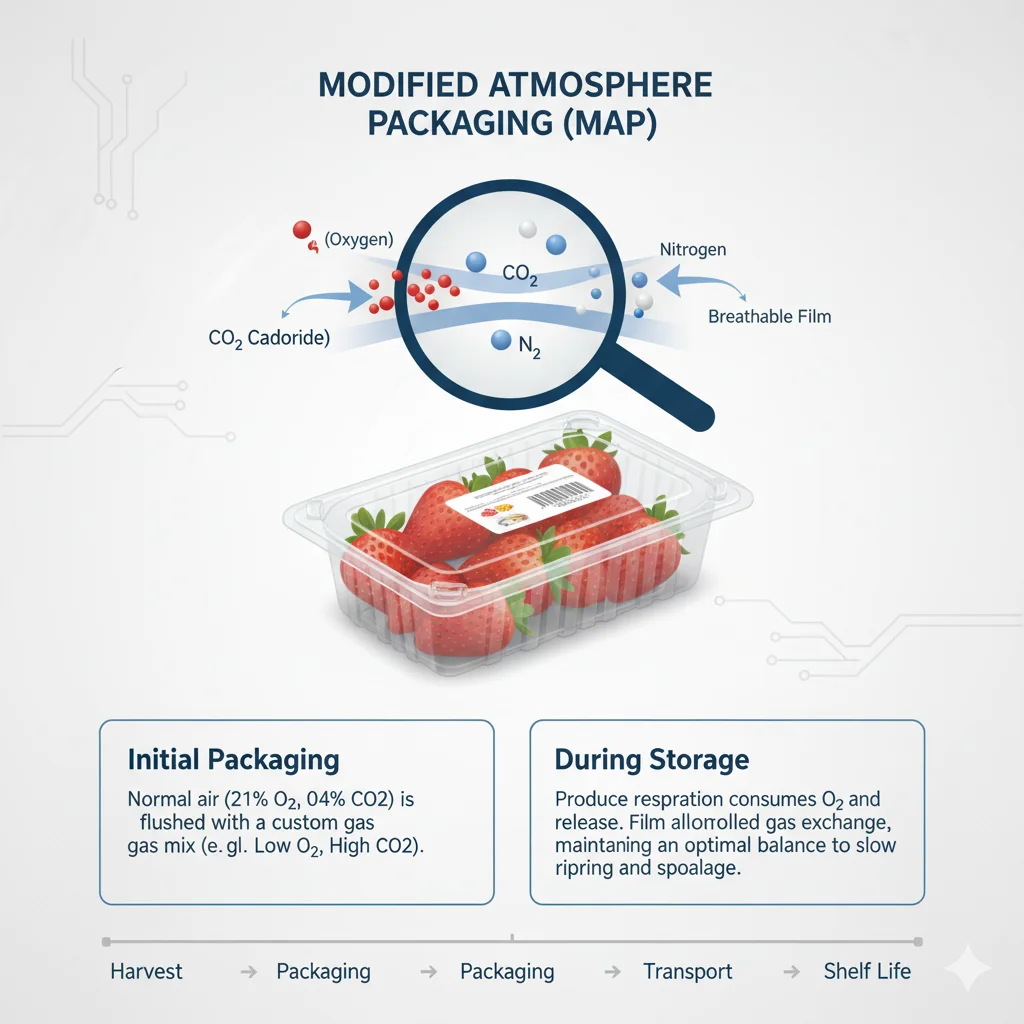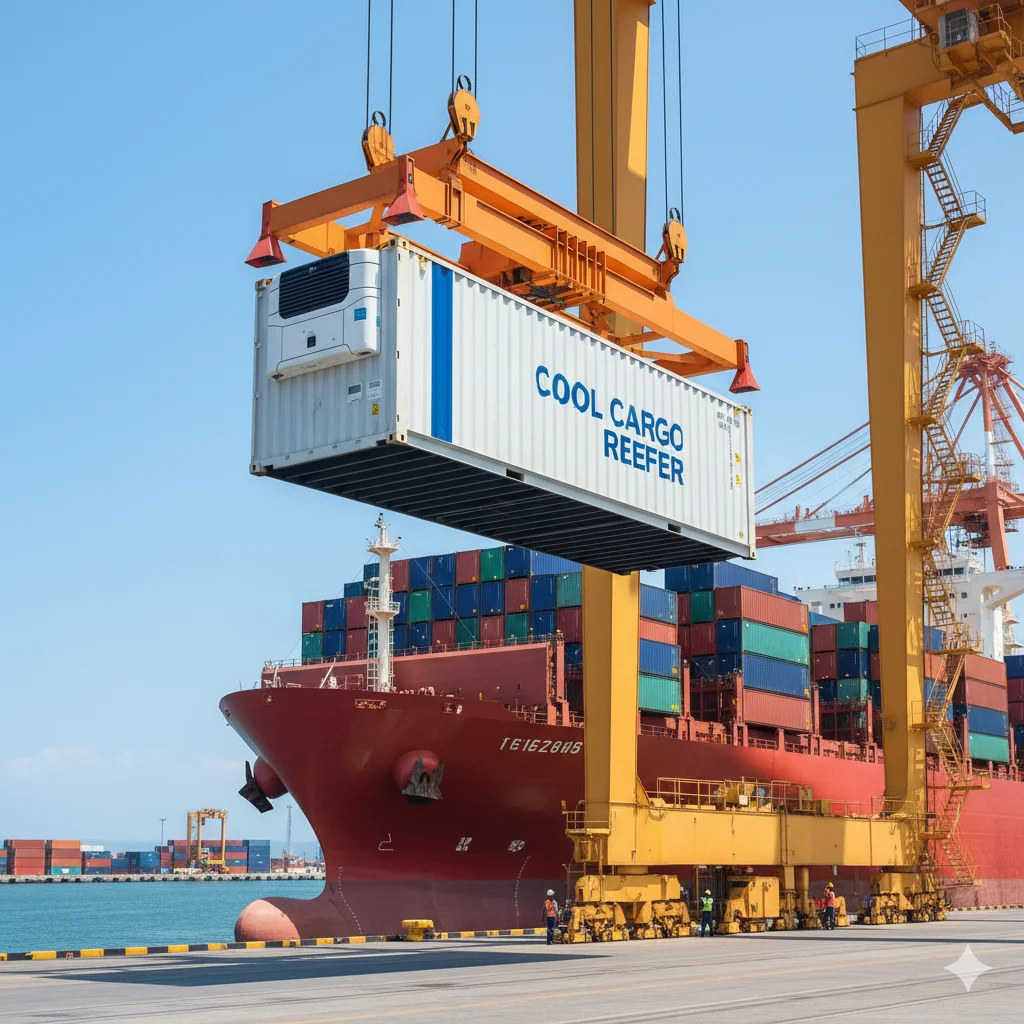Fresh Produce Supply Chain Solutions | A Guide to Packaging & Cold Chain Management
Introduction
The journey of a perfect fruit—a crisp apple, a juicy pomegranate, a sweet bunch of grapes—is a race against time. From the moment it is picked in a sun-drenched orchard to its arrival on a consumer’s table thousands of miles away, a delicate and complex process unfolds. In the global fruit trade, the greatest challenge is not merely growing a high-quality product; it is delivering that product in its peak state of freshness, flavor, and nutritional value. This is the art and science of Fresh Produce Supply Chain Solutions.
For importers and distributors, the reliability of a supplier is measured not only by the quality of their harvest but also by their mastery of the post-harvest supply chain. Two interconnected pillars form the foundation of this mastery: advanced, intelligent packaging and an unbroken, meticulously managed cold chain. A failure in either of these can turn a premium shipment into a significant financial loss.
This comprehensive guide is designed for professionals in the fresh produce industry. We will explore the critical technologies and best practices that ensure fruit remains fresh during international transit. We will delve into the science of modern packaging, demystify the complexities of cold chain management, and illustrate what it takes to be a leader in Fresh Produce Supply Chain Solutions. Understanding these processes is key to choosing a supply partner who can consistently deliver quality and value.
Post-Harvest Handling: The Foundation of Fresh Produce Supply Chain Solutions
The journey to preserving freshness begins the instant a fruit is harvested. The actions taken in the first few hours after picking have a profound impact on its ultimate shelf life and quality. Expert post-harvest handling is the crucial first stage in a successful logistics chain and a key indicator of a supplier’s commitment to excellence. Truly effective Fresh Produce Supply Chain Solutions are built upon a foundation of meticulous care from the very start.
Gentle Harvesting and Meticulous Sorting
Quality preservation starts with a gentle touch. Every bruise, scrape, or compression injury is an open door for decay-causing microorganisms. Our network of growers is trained in harvesting techniques that minimize mechanical damage. Once harvested, the produce is immediately transported to a packing house where it undergoes meticulous sorting and grading.
Using a combination of automated technology and skilled human inspection, fruits are categorized based on critical attributes:
- Size and Weight: Ensuring uniformity for consistent packing and retail value.
- Color: A key indicator of ripeness and visual appeal.
- Maturity: Selecting fruits at the optimal stage for the long journey ahead.
- Defects: Culling any produce with blemishes, cuts, or signs of disease.
This sorting process ensures that only the strongest, highest-quality fruits are selected for export.
Pre-Cooling: The Critical First Step to Lock in Freshness
Fruits are living organisms that continue to respire even after being picked. This respiration generates heat, which accelerates the ripening and degradation processes. “Field heat” is the term for the fruit’s high temperature at the moment of harvest. The single most important step in slowing down this degradation is pre-cooling—the rapid removal of field heat before the produce is packed or stored.
Effective pre-cooling can dramatically extend shelf life. Depending on the fruit, various methods are used, such as forced-air cooling or hydro-cooling. By quickly lowering the fruit’s core temperature, we put it into a state of near-hibernation, preserving its freshness, texture, and nutritional content for the journey ahead. This step is a non-negotiable part of any serious fresh produce supply chain solutions.
Advanced Fruit Export Packaging: More Than Just a Box
Modern packaging for fresh produce is a sophisticated science. It is no longer just a container for transport; it is an engineered system designed to protect, preserve, and communicate. The right fruit export packaging is essential for maintaining the quality established during post-harvest handling and is a cornerstone of reliable fresh produce export logistics.
The Primary Functions of Export Packaging
A well-designed package serves three primary functions:
- Protection: It must shield the delicate produce from mechanical damage such as impacts, compression, and vibrations during handling and transit.
- Preservation: It plays an active role in extending shelf life by helping to manage temperature, humidity, and atmospheric composition.
- Communication: The package provides vital information, including product type, grade, weight, origin, and specific handling instructions for logistics partners.
Types of Packaging for Different Fruits
There is no one-size-fits-all solution. The choice of packaging is tailored to the specific needs of each fruit:
- Ventilated Fiberboard Cartons: The workhorse of the industry, used for a wide range of fruits like citrus, grapes, and pomegranates.
- Molded Trays and Dividers: For delicate fruits like Apple and pomegranates, molded pulp or plastic trays are used inside cartons to cushion each fruit individually.
- Clamshells and Punnets: Small, soft fruits like berries, cherries, and
Tomato🍅are packed in these rigid plastic containers to protect them from being crushed.
The Science Inside: Modified Atmosphere Packaging (MAP)
One of the most significant advancements in preservation is Modified Atmosphere Packaging (MAP). This technology involves altering the gaseous environment inside a package to slow down the natural aging process. The process works by reducing oxygen (O2) and increasing carbon dioxide (CO2), which slows respiration and inhibits decay. MAP is a key component in modern Fresh Produce, allowing for sea freight shipments of highly perishable goods that were once only possible via expensive air freight.
Cold Chain Management: The Unbroken Lifeline of Your Supply Chain
The second pillar of freshness preservation is the cold chain. Effective Fresh Produce Supply Chain Solutions are impossible without it. The cold chain is a continuous, temperature-controlled supply chain that stretches from the packhouse to the final destination. An unbroken cold chain is non-negotiable for delivering high-quality perishable goods.
Why Temperature Is Everything
Temperature is the single most important factor affecting the shelf life of fresh produce. A lower temperature dramatically slows down the rate of respiration, water loss, and the growth of spoilage microorganisms. Maintaining a precise environment is the core objective of cold chain management.
Key Stages of the Cold Chain
The chain is only as strong as its weakest link. A temperature breach at any stage can compromise the entire shipment.
- Packhouse Cold Storage: Immediately after packing, the produce is moved to a cold storage facility.
- Refrigerated Transport (Reefer Trucks): The cartons are loaded into refrigerated trucks for the journey to the port or airport.
- Reefer Containers: For sea freight, the cargo is loaded into refrigerated containers, also known as Reefer Containers. These are sophisticated units that maintain precise temperature and humidity for weeks.
- Destination Handling: The cold chain continues upon arrival at the destination port and into refrigerated warehouses.
The High Cost of a Broken Chain
A break in the cold chain can initiate irreversible damage, leading to accelerated ripening, moisture loss, and microbial growth. This results in reduced shelf life, loss of quality, and significant financial losses for the importer, undermining the entire purpose of investing in fresh produce supply chain solutions.
Modern Monitoring for Complete Transparency
To ensure the integrity of the cold chain, modern logistics rely on advanced monitoring technology. Small, portable data loggers are placed inside shipping containers to continuously record temperature and humidity. Upon arrival, the data provides a complete history of the shipment’s conditions, offering full transparency and guaranteeing that the product was transported under optimal conditions as part .
Conclusion: Your Partner in Freshness
Ensuring freshness in fruit exports is a complex synergy of agricultural science, materials engineering, and precision logistics. It begins with a gentle harvest and ends with a satisfied customer continents away. The journey in between is a testament to the power of expert fresh produce export logistics.
By investing in advanced fruit export packaging and adhering strictly to the principles of cold chain management, a supplier demonstrates their commitment to quality beyond the farm gate. This expertise is what transforms a simple fruit exporter into a reliable, long-term partner in the global marketplace. Our company has built its reputation on providing end-to-end Fresh Produce Supply Chain Solutions that our clients can trust. We understand that your success depends on the quality and consistency of the products we deliver, and we invite you to Contact us to learn more about our state-of-the-art logistics processes.
(SEO Tags)
Fresh Produce Supply Chain Solutions, Cold Chain Management, Fruit Export Packaging, Post-Harvest Handling, Reefer Containers, International Fruit Shipping, Quality Assurance, Shelf Life Extension, B2B Fruit Supply, Modified Atmosphere Packaging, Perishable Goods Transport




